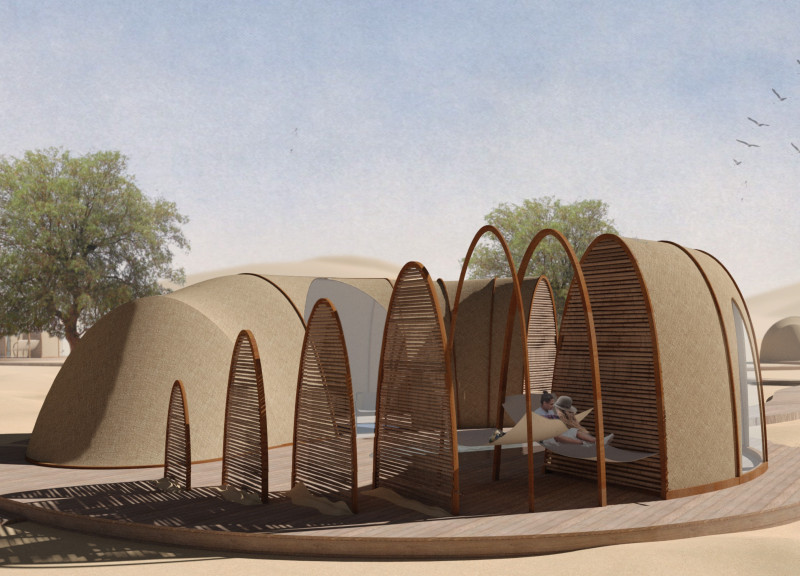5 key facts about this project
The project encapsulates the essence of traditional desert architecture while integrating contemporary techniques and materials. It seeks to embody the spirit of historical oases that provided refuge and sustenance, presenting a harmonious blend of shelter, community space, and interaction with the surrounding landscape.
Innovative Use of Arched Forms
One of the distinctive features of "Adaptable Oases" is the use of arched forms throughout the structure. These arches are not merely aesthetic; they play a critical role in enhancing the building's performance. They facilitate airflow and provide shade, benefiting inhabitants during extreme weather conditions. Additionally, the design includes various communal and private areas that promote social interaction while respecting individual privacy.
The project also emphasizes adaptability, allowing the structures to be reconfigured based on user requirements. This flexibility ensures that the living spaces can evolve with the occupants, making them suitable for different purposes and group sizes. By incorporating modular elements, the design allows for easy modification and disassembly, reflecting a thoughtful approach to sustainability in architecture.
Sustainable Material Selection
Materiality is a key aspect of the "Adaptable Oases" project. The architecture employs a range of locally sourced materials, including woven matting, sustainable timber, concrete, and local stone. This choice not only minimizes the environmental impact but also supports local craftsmanship. The integration of solar threads within the fabric of the structure enables energy generation, while advanced water collection systems facilitate efficient resource management.
The project is structured to leverage natural resources, employing passive cooling techniques to create a comfortable indoor environment. Courtyards and open spaces encourage interaction with nature and enhance the overall experience of the site. This design approach reinforces the connection between the built environment and its natural surroundings, effectively merging architecture with the landscape.
For further insights into the "Adaptable Oases" project, including detailed architectural plans, sections, and designs, readers are encouraged to explore the project presentation. Gaining access to these elements will provide a comprehensive understanding of the innovative architectural ideas that define this unique endeavor.


























